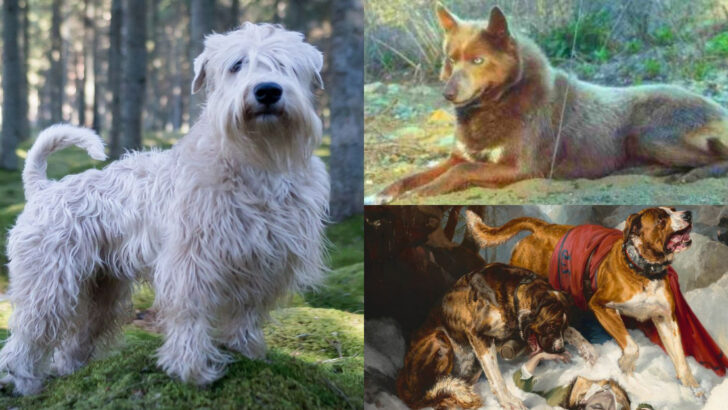Throughout history, many dog breeds have come and gone, leaving behind fascinating tales of their existence and disappearance. From royal companions to working dogs, these extinct breeds were once an integral part of human life.
This blog post explores 24 unique dog breeds that have vanished over time, uncovering the intriguing stories behind their extinction. These breeds, though no longer with us, continue to captivate our imagination with their legacy and influence on modern canine companions.
Join us as we delve into the history and mysteries surrounding these forgotten breeds.
St. John’s Water Dog
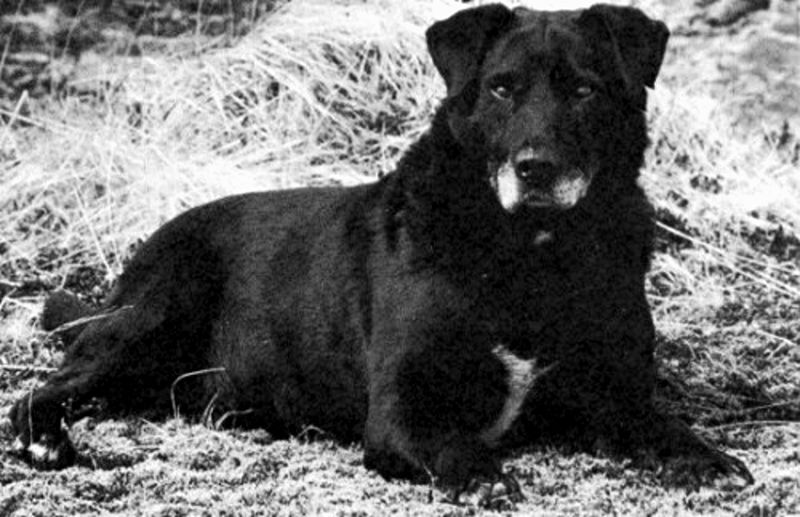
Known for exceptional swimming ability, the St. John’s Water Dog was a fisherman’s best friend in Newfoundland.
Their uncanny talent for retrieving fishing nets and lost gear made them indispensable. Despite their utility, they vanished by the early 20th century due to crossbreeding with European breeds.
Their legacy lives on in popular retrievers like the Labrador and Golden Retriever. Breeders and enthusiasts remember them fondly, celebrating their contribution to modern breeds.
While we can’t bring them back, understanding their role offers insights into the development of today’s canine companions.
Russian Tracker
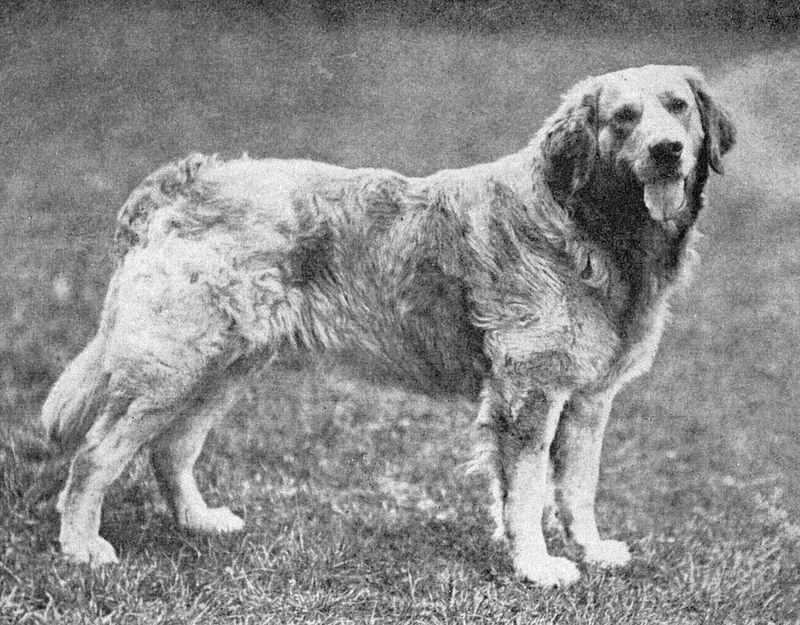
Thriving in the harsh climates of Russia, the Russian Tracker was known for its resilience and ability to guard livestock. These dogs worked tirelessly in remote areas, protecting herds from predators.
However, as industrialization progressed, demand for such breeds declined. Crossbreeding for specific traits led to their disappearance, but elements of their genes persist in breeds like the Caucasian Shepherd Dog.
Those who study these dogs admire their incredible adaptability and unwavering loyalty, qualities that continue to inspire dog lovers and breeders alike.
Kurī
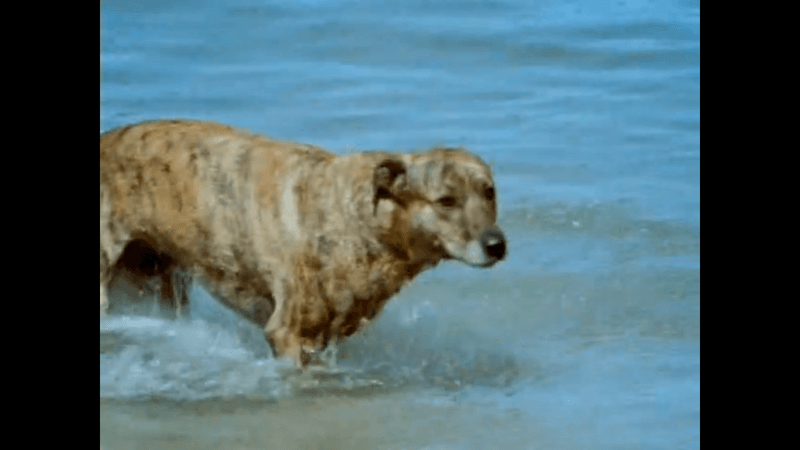
The Kurī, introduced by Polynesians to New Zealand, was more than just a pet; it was a symbol of companionship and utility. Used by the Maori for hunting and as a source of fur, their numbers dwindled with European colonization.
Western breeds dominated, leading to their extinction. The Kurī’s story is a reminder of cultural shifts and the impact on indigenous fauna.
Today, artifacts and depictions in Maori art keep their memory alive, allowing us to appreciate the unique relationship between the Kurī and the Maori people.
Molossus
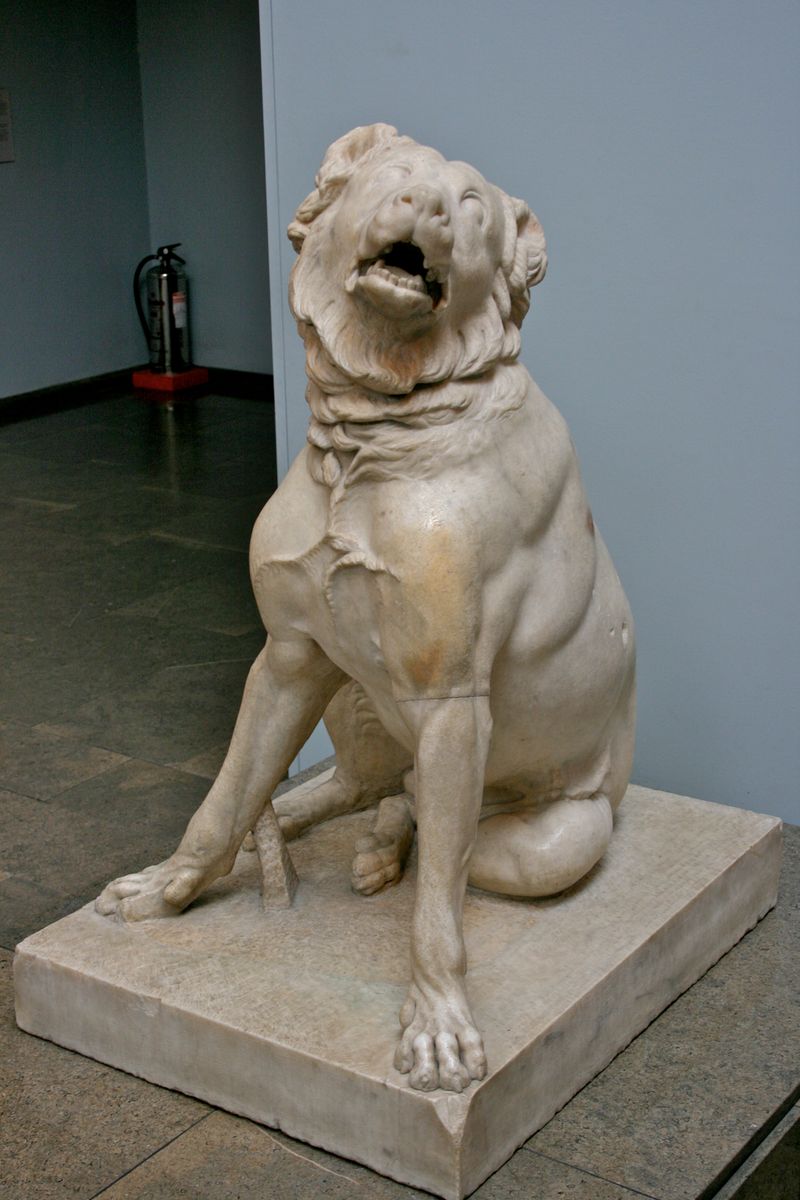
Hailing from ancient Greece, the Molossus was the warrior’s companion, often depicted alongside soldiers and used in battles. These formidable dogs were also protectors of livestock and property.
Over time, their lineage blended into modern mastiff breeds, but the original Molossus vanished. Their influence is seen in today’s mastiffs, known for their strength and protective nature.
History enthusiasts and breeders respect the Molossus for its historical significance and contribution to the genetic pool of contemporary guard dogs.
Alpine Mastiff
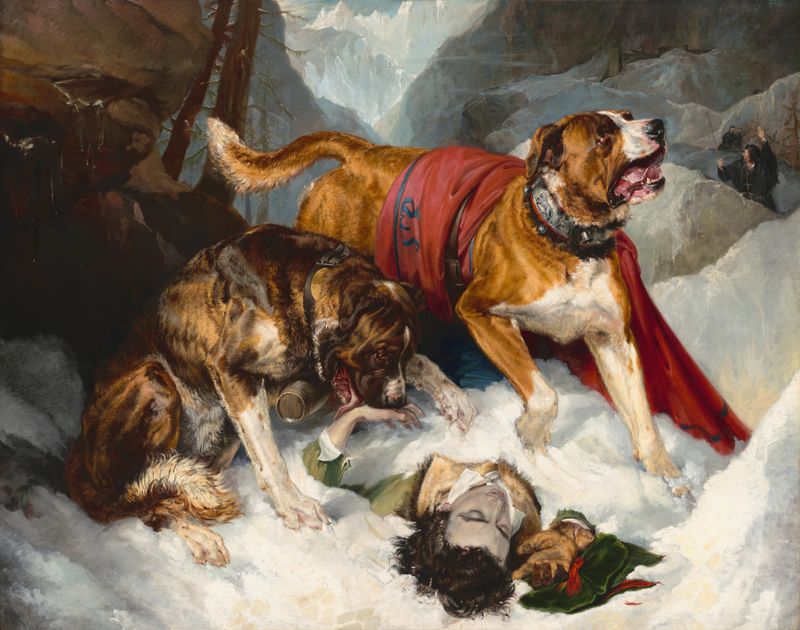
Regarded as one of the largest dogs of its time, the Alpine Mastiff was an ancestor to the modern St. Bernard.
Known for their rescue missions in the Swiss Alps, these dogs had a keen sense of direction and strength. Crossbreeding to enhance rescue capabilities led to their eventual extinction by the late 19th century.
Today, their legacy endures through the St. Bernard, a breed synonymous with heroism and loyalty.
Mountaineers and animal lovers cherish their history, celebrating their bravery in saving lives.
Tahltan Bear Dog
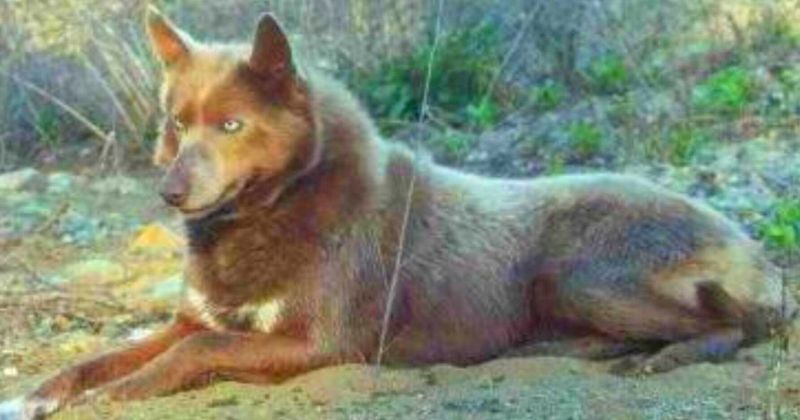
Bred by the Tahltan people of Canada, the Tahltan Bear Dog was a skilled hunter, adept at tracking and cornering bears. Small yet fearless, they were invaluable to their human companions.
As lifestyles changed and larger hunting breeds became popular, their numbers dwindled. By the mid-20th century, they had disappeared.
The Tahltan Bear Dog remains a symbol of the close bond between Indigenous cultures and their canine companions, remembered for their courage and dedication to their people.
Salish Wool Dog
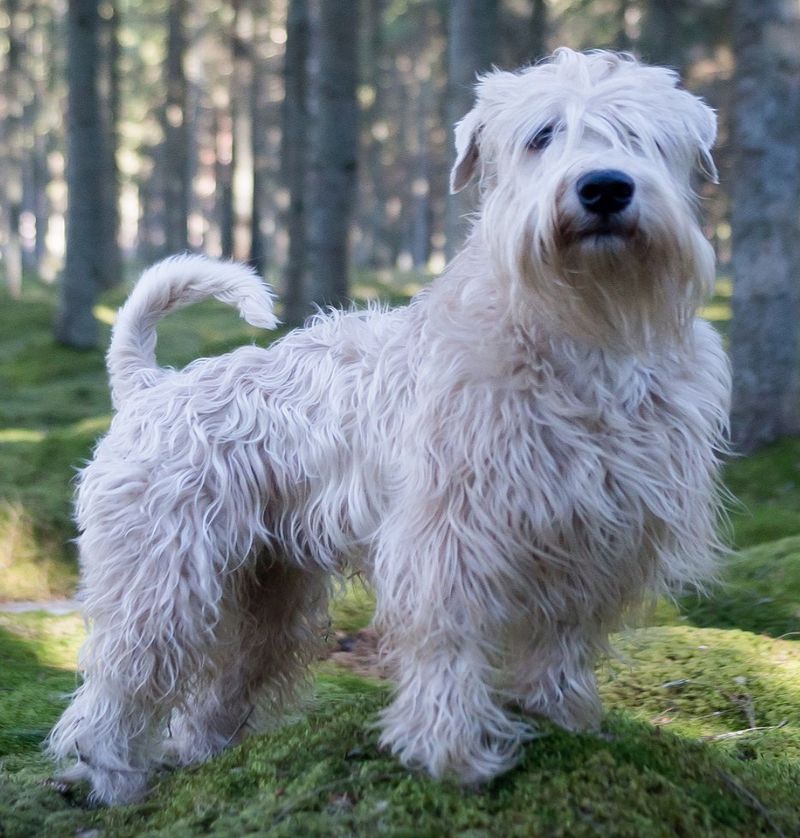
The Salish Wool Dog, prized for its woolly coat, was a cornerstone of textile production for the Coast Salish people. Kept isolated to maintain their unique fur, these dogs provided wool for weaving blankets and clothing.
As sheep became more prevalent, the need for their wool diminished, leading to their extinction by the early 20th century. Their legacy is woven into the cultural fabric of the Pacific Northwest, symbolizing a unique relationship between humans and animals in traditional craftsmanship.
Turnspit Dog
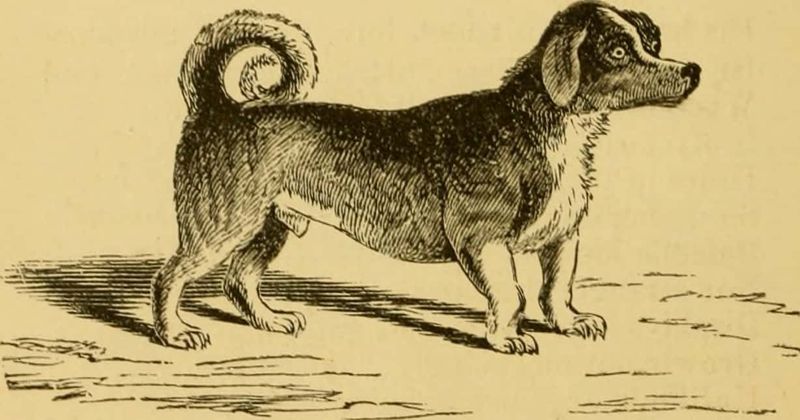
In medieval kitchens, the Turnspit Dog was an essential worker, tasked with turning spits to roast meats evenly. Their unique physique suited this role perfectly.
As technology advanced, mechanized devices replaced these dogs, leading to their decline. By the 19th century, they had disappeared.
The Turnspit Dog’s story highlights the evolution of cooking methods and the changing roles animals have played alongside humans. While they are gone, their contributions to culinary history remain a fascinating chapter.
Paisley Terrier
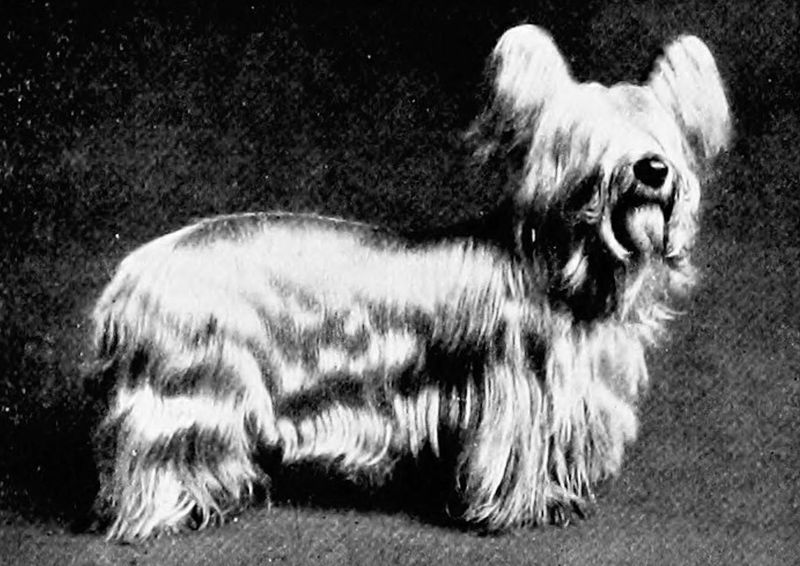
Renowned for its elegant appearance, the Paisley Terrier was a favorite lapdog in Victorian times. With a silky, flowing coat, they were bred for companionship and show.
As breeding preferences shifted towards longer-haired varieties like the Yorkshire Terrier, the Paisley Terrier gradually vanished. Despite their extinction, their influence is still seen in the features of contemporary terriers.
Victorians cherished these dogs for their beauty and grace, and their legacy continues to enchant fans of toy breeds.
Cumberland Sheepdog
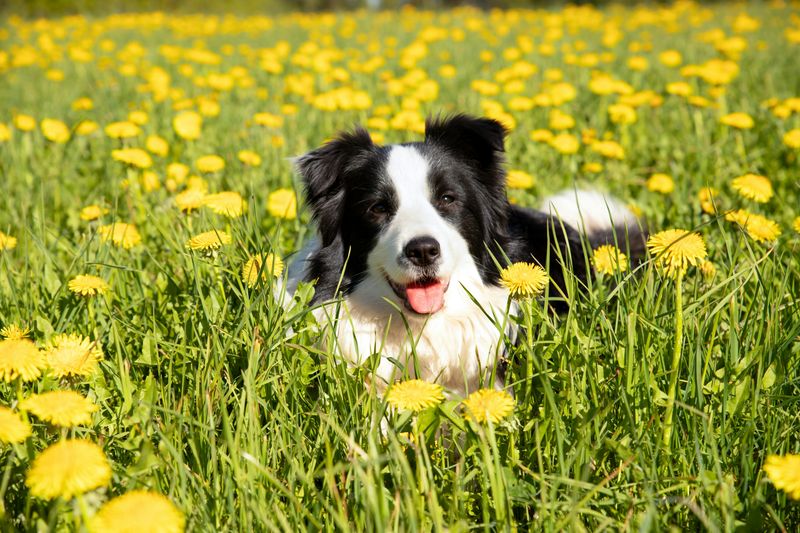
Once a staple of English pastoral life, the Cumberland Sheepdog was an adept herder, known for its intelligence and agility. Over time, they were outcrossed with Border Collies and other breeds, leading to their extinction.
Though gone, their legacy lives on through the Border Collie, celebrated for its herding prowess. Farmers treasure the Cumberland Sheepdog’s contribution to the development of world-renowned herding breeds, appreciating the historical roots of their trusted companions.
Norfolk Spaniel
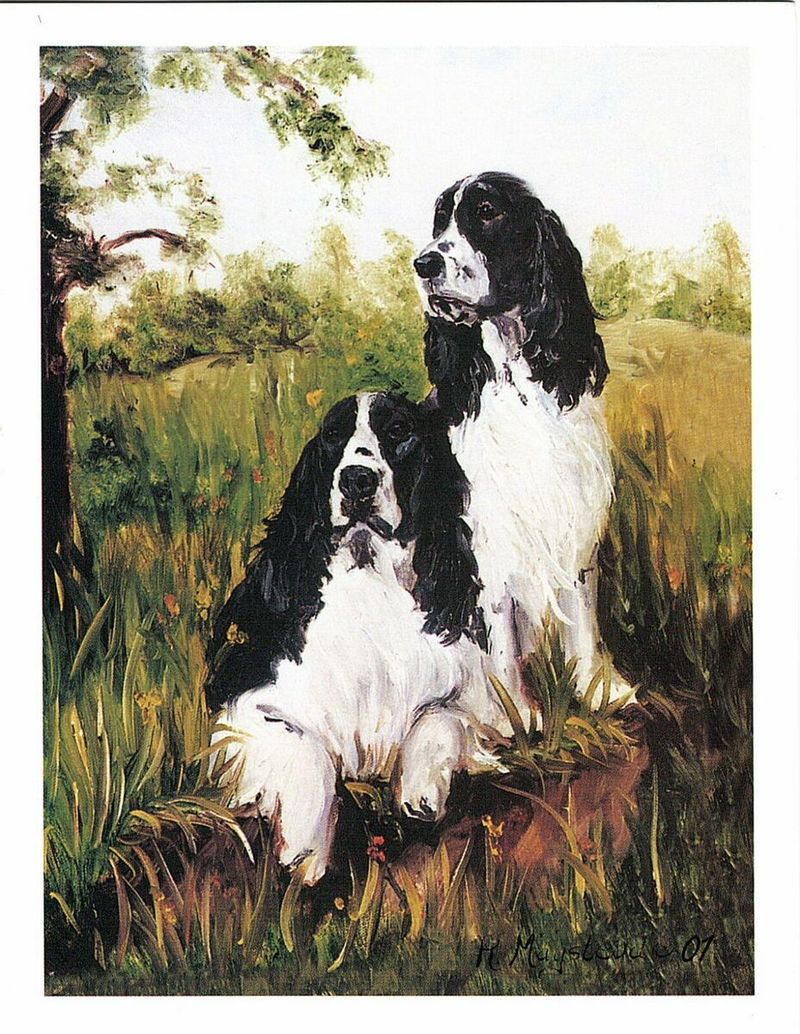
Known for its loyal nature and keen hunting skills, the Norfolk Spaniel was a popular gun dog in England. They excelled in retrieving game from water and dense brush.
Over time, they were absorbed into the English Springer Spaniel breed, leading to their extinction. Enthusiasts and historians of gundogs remember the Norfolk Spaniel for its role in shaping the characteristics of modern spaniels, appreciating their contribution to the hunting traditions.
Old English Bulldog
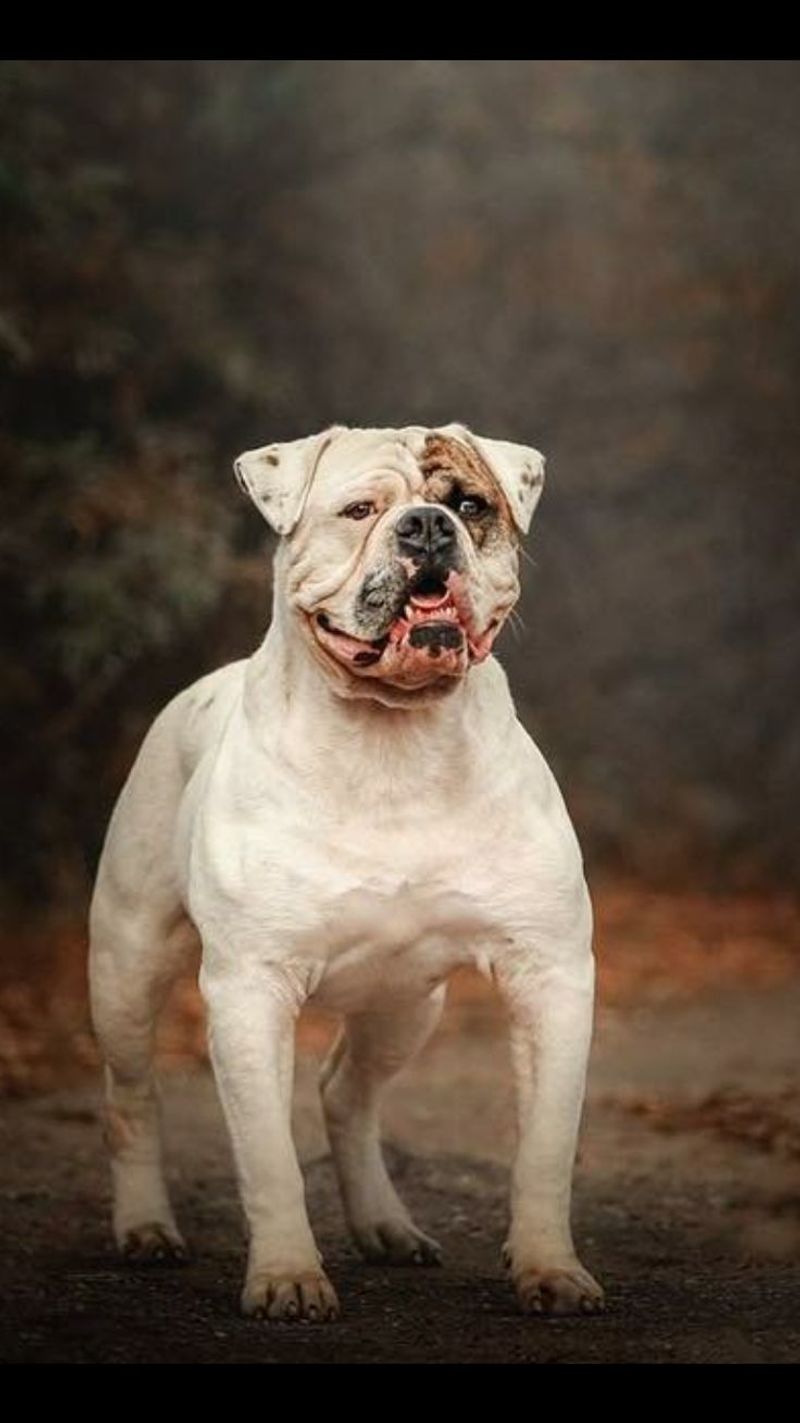
Famous for its role in bull-baiting, the Old English Bulldog was bred for strength and tenacity. With the ban on such blood sports, their numbers dwindled, and they were eventually bred into more docile forms like the modern Bulldog.
Though the original is gone, the Old English Bulldog’s legacy is evident in the affectionate, loyal nature of its descendants. Those interested in canine history and the evolution of dog breeds appreciate the Old English Bulldog’s influence on today’s beloved pets.
Toy Bulldog
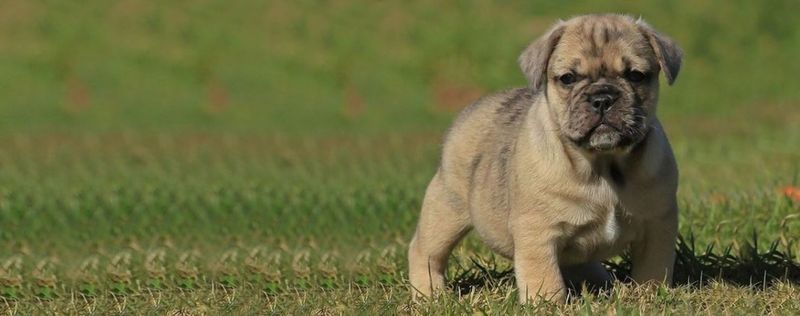
Bred as a companion and show dog, the Toy Bulldog was a smaller version of its English cousin. Popular in France and England, they were known for their charm and compact size.
Attempts to refine their features led to health issues, contributing to their decline. Eventually, they were absorbed into the French Bulldog breed.
The Toy Bulldog’s story is a testament to the challenges of breeding for aesthetics over health, providing valuable lessons for modern breeders.
Brazilian Tracker
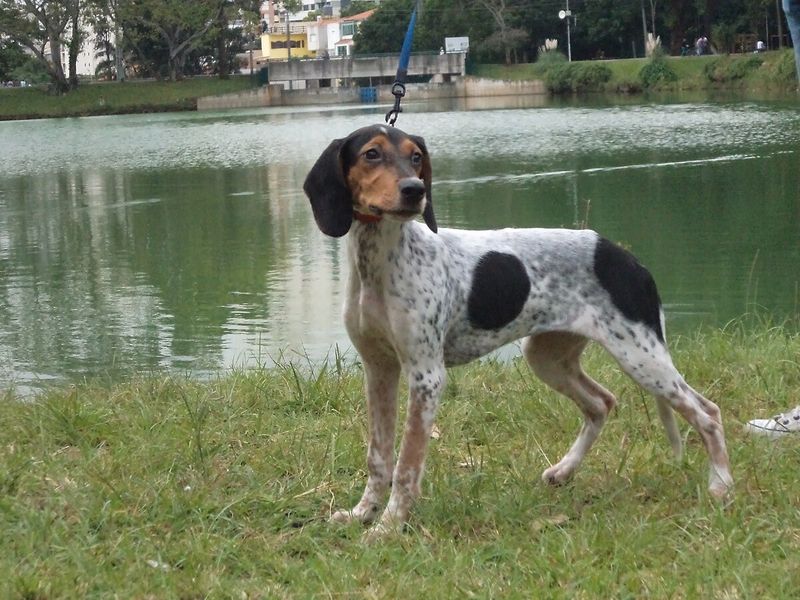
Developed in Brazil for hunting in diverse terrains, the Brazilian Tracker was a skilled and resilient breed. Known for its keen sense of smell and agility, it thrived in the Brazilian wilderness.
Tragically, a disease outbreak in the 1970s decimated their population, leading to their extinction. Efforts to revive the breed are ongoing, highlighting the importance of genetic diversity in preserving canine heritage.
The Brazilian Tracker’s story resonates with conservationists and dog lovers alike, emphasizing the need for diligent care and breeding practices.
Hare Indian Dog
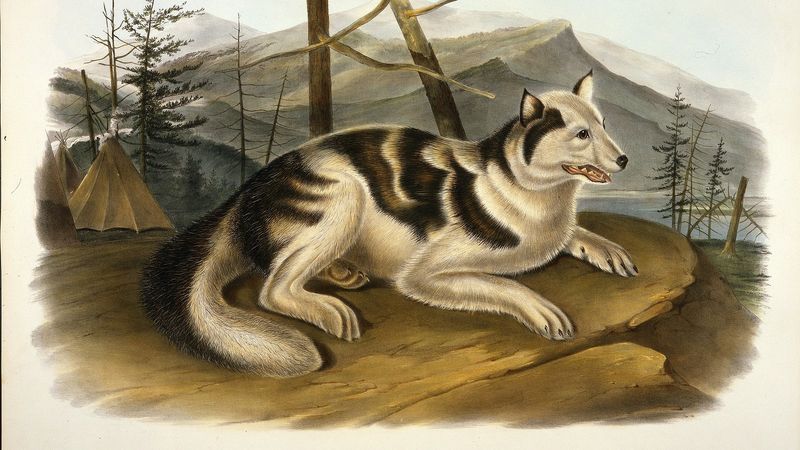
Belonging to the indigenous peoples of Canada, the Hare Indian Dog was a swift and agile hunting companion. Perfectly adapted to the cold climate, they assisted in hunting small game.
As European dogs were introduced, the Hare Indian Dog faced competition, leading to their extinction. Their legacy reflects the deep connection between indigenous cultures and their canine partners.
Historians study these dogs to understand the historical landscapes where they thrived, appreciating their unique adaptations and contributions.
Talbot Hound
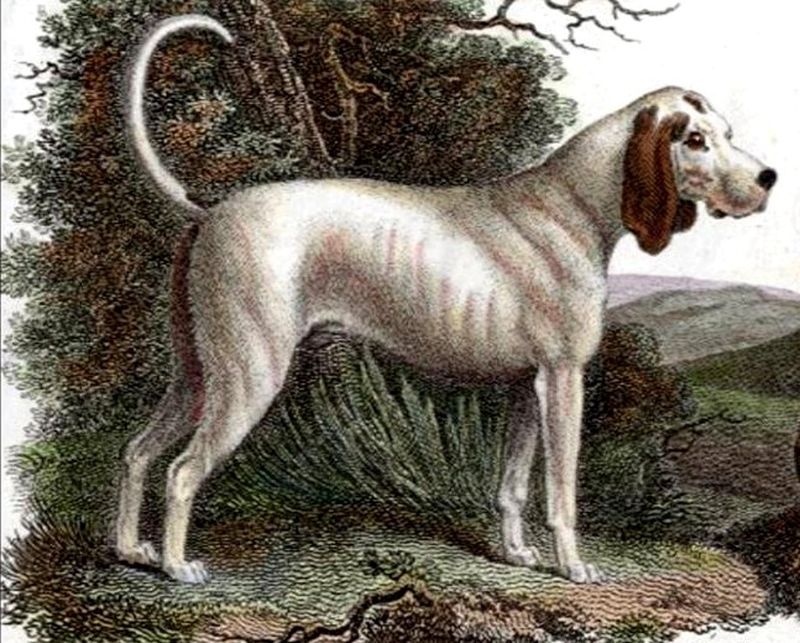
The Talbot Hound, an ancient hunting breed, was renowned for its powerful tracking abilities. Often featured in medieval hunt scenes, their lineage contributed to modern hounds like the Bloodhound.
As hunting practices changed, the Talbot Hound faded from existence. However, their genetic influence persists, enriching the heritage of today’s scent hounds.
Those interested in canine history celebrate the Talbot Hound’s role in developing breeds known for their exceptional noses, honoring their place in the annals of hunting history.
Old Welsh Grey Sheepdog
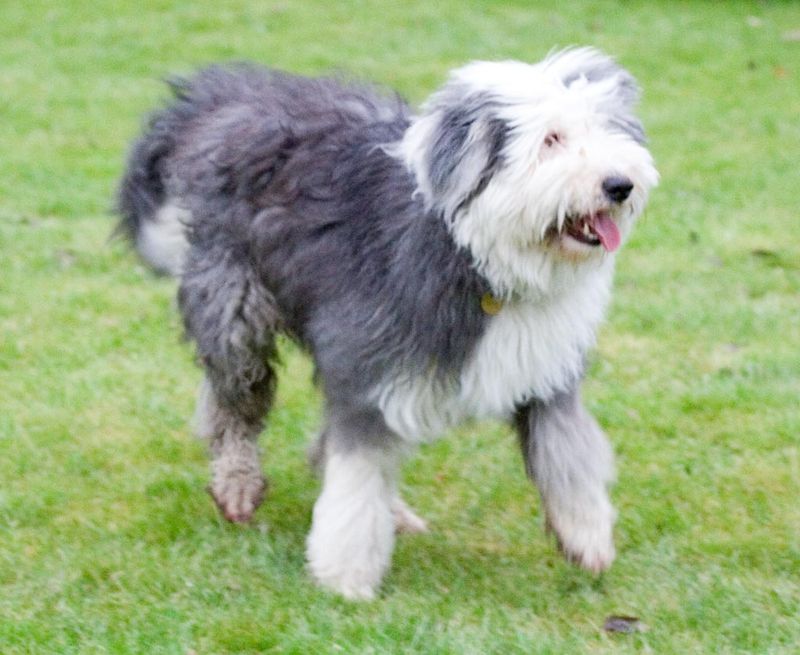
Renowned for its herding skills, the Old Welsh Grey Sheepdog was a common sight in the Welsh highlands. Known for its intelligence and hardworking nature, it managed flocks with ease.
Crossbreeding with other herding dogs led to its decline, resulting in its extinction. Yet, its legacy endures through breeds like the Welsh Sheepdog, valued for their herding expertise.
Farmers and historians recognize the Old Welsh Grey’s role in shaping the capabilities of modern herding dogs, ensuring its contributions are not forgotten.
Halls Heeler
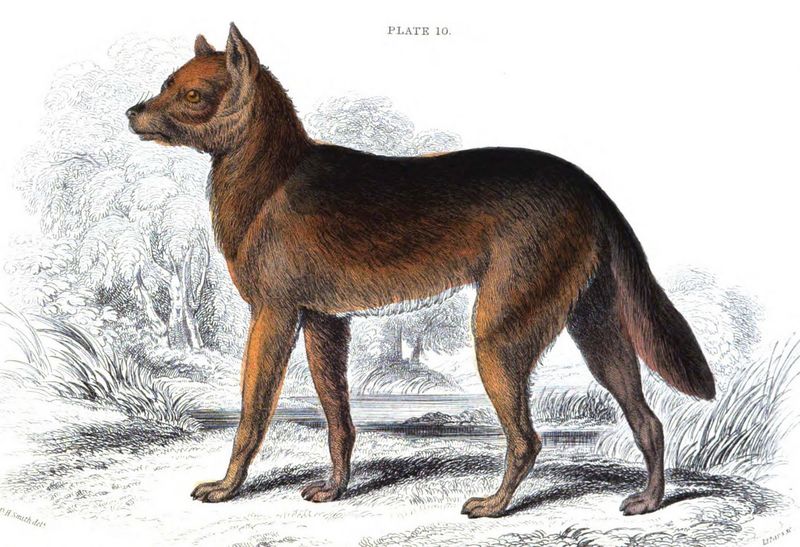
The precursor to the Australian Cattle Dog, Halls Heeler was instrumental in developing dogs suited for Australia’s challenging terrain. Known for their stamina and herding skills, they were essential to cattlemen.
Through selective breeding, Halls Heeler evolved into the recognizable Australian Cattle Dog, leading to its extinction. The legacy of Halls Heeler lives on in Australian farming culture, where their contribution to ranching success is celebrated and respected by those who value hard-working canine companions.
Chien-gris
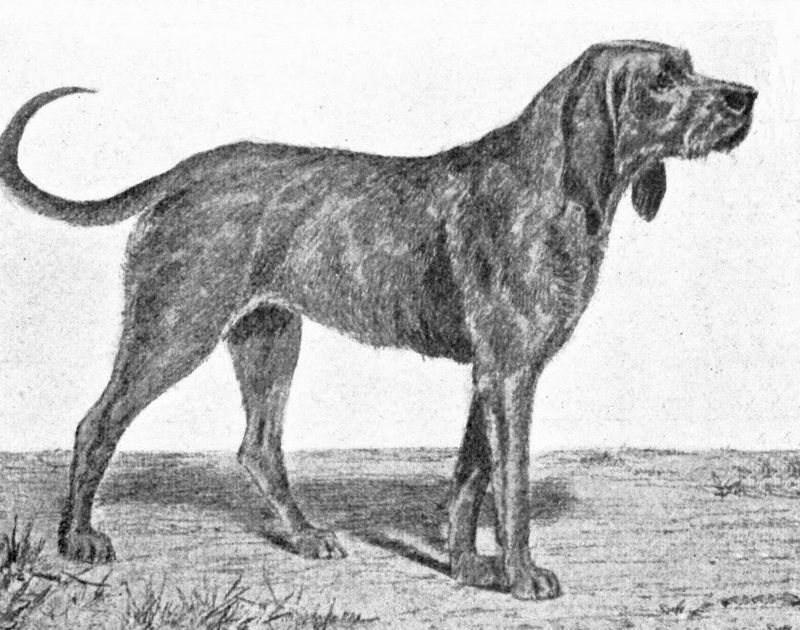
The Chien-gris, with its distinctive grey coat, was a respected hunting companion in medieval France. Well-regarded for its speed and hunting prowess, it was often seen in the courts of nobility.
Over time, breeding with other hounds led to its decline. Though extinct, its characteristics linger in some modern French hunting dogs.
The Chien-gris represents a bygone era of hunting traditions and the intricate relationship between nobility and their canine companions, offering insights into medieval society’s reliance on dogs for both sport and sustenance.
Bullenbeisser

The Bullenbeisser, often used for bull-baiting and hunting, was a powerful breed from Germany. Known for its strength and tenacity, it was eventually crossbred to develop the modern Boxer.
Industrialization and changes in sport led to its extinction. The story of the Bullenbeisser is a testament to the adaptability and evolution of dog breeds, illustrating how historical functions have shaped today’s canine companions.
It remains a point of interest for those studying the development of working and sporting dogs.
English Water Spaniel
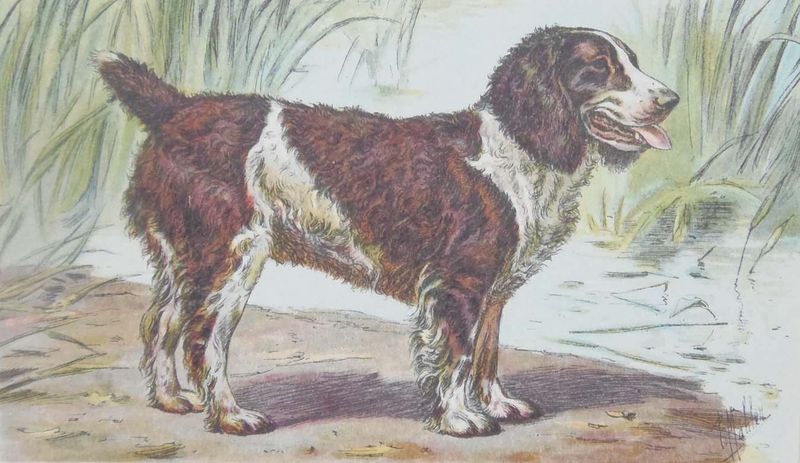
The English Water Spaniel, adept at waterfowl hunting, was known for its retrieving skills and aquatic agility. Its curly coat provided protection in cold waters.
As other spaniel breeds rose in popularity, the English Water Spaniel’s numbers declined, leading to its extinction by the 20th century. Hunters and enthusiasts appreciate its role in the lineage of modern water dogs, acknowledging its contributions to the development of breeds celebrated for their waterfowl hunting abilities.
Old Spanish Pointer
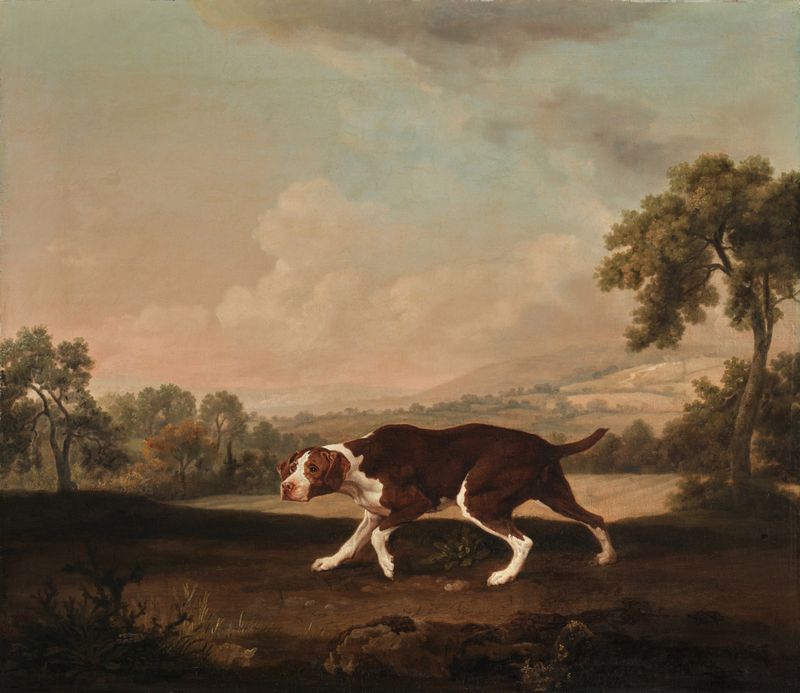
The Old Spanish Pointer was a premier hunting dog, prized for its pointing instinct and endurance. Brought to England, it influenced the development of British pointing breeds.
As hunting preferences evolved, they were bred out of existence. Their influence, however, persists in the genes of modern pointers.
Hunters and historians of canine breeds celebrate the Old Spanish Pointer’s role in shaping the functionality and versatility of today’s sporting dogs, ensuring their contributions remain recognized and honored.
Dogo Cubano
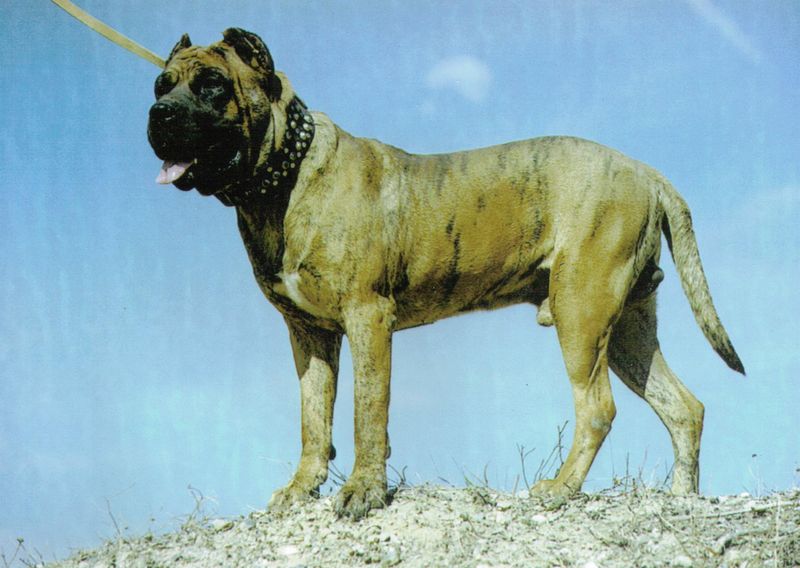
Used primarily as a guard and plantation dog in Cuba, the Dogo Cubano was known for its protective instincts and intimidating presence. The abolition of slavery and changes in plantation systems led to a decline in demand for such dogs.
Eventually, they were bred out of existence. The Dogo Cubano’s story reflects the socio-economic changes of 19th-century Cuba and the shifting roles of working dogs.
Their legacy is studied by historians and canine enthusiasts, highlighting the dynamic relationship between society and its need for specialized canine roles.

